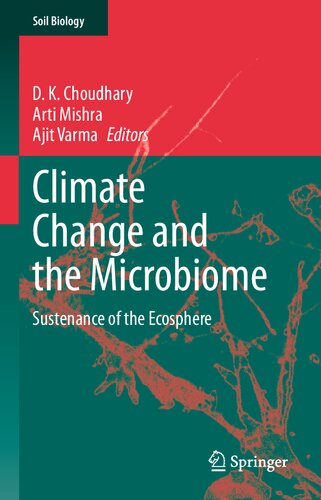

Most ebook files are in PDF format, so you can easily read them using various software such as Foxit Reader or directly on the Google Chrome browser.
Some ebook files are released by publishers in other formats such as .awz, .mobi, .epub, .fb2, etc. You may need to install specific software to read these formats on mobile/PC, such as Calibre.
Please read the tutorial at this link: https://ebookbell.com/faq
We offer FREE conversion to the popular formats you request; however, this may take some time. Therefore, right after payment, please email us, and we will try to provide the service as quickly as possible.
For some exceptional file formats or broken links (if any), please refrain from opening any disputes. Instead, email us first, and we will try to assist within a maximum of 6 hours.
EbookBell Team

4.8
14 reviewsThis book highlights the impact of climate change on the soil microbiome and its subsequent effects on plant health, soil-plant dynamics, and the ecosphere. It also discusses emerging ideas to counteract these effects, e.g., through agricultural applications of functional microbes, to ensure a sustainable ecosystem.
Climate change is altering the soil microbiome distributions and thus the interactions in microbiome and plant‐soil microorganism. Improvement of our understanding of microbe-microbe and plant-microbe interaction under changing climatic conditions is essential, because the overall impact of these interactions under varying adverse environmental conditions is lacking. This book has been designed to understand the impact of climate change, i.e., mainly salt and drought stress, on the soil microbiome and its impact on plant, yield, and the ecosphere.
The book is organized into four parts: The first part reviews the impact of climate change on the diversity and richness of the soil microbiome. The second part addresses effects of climate change on plant health. The third part discusses effects on soil-plant dynamics and functionality, e.g., soil productivity. The final part deals with the effects of climate change on ecosystem functioning and also discusses potential solutions.
The book will appeal to students and researchers working in the area of soil science, agriculture, molecular biology, plant physiology, and biotechnology.